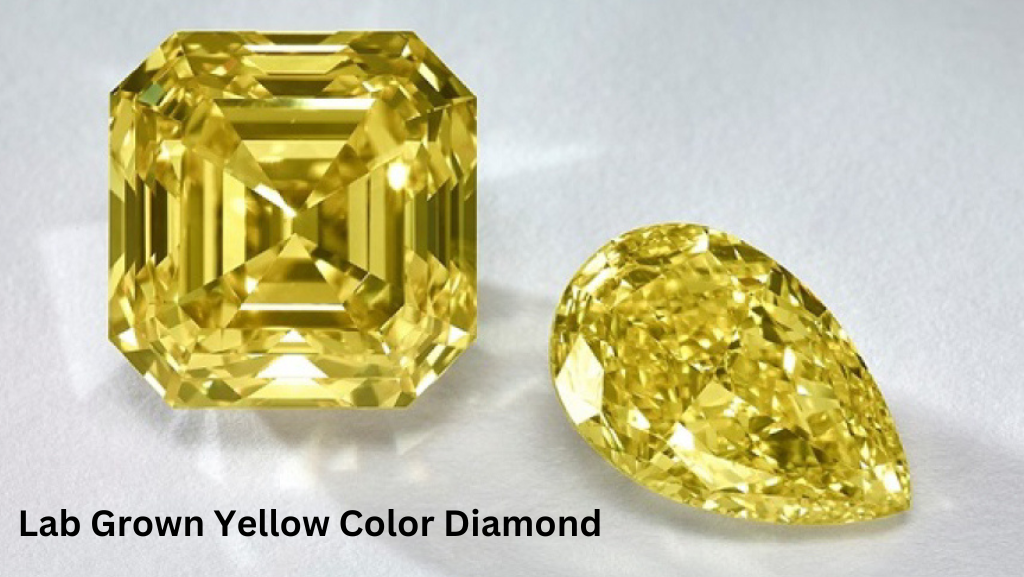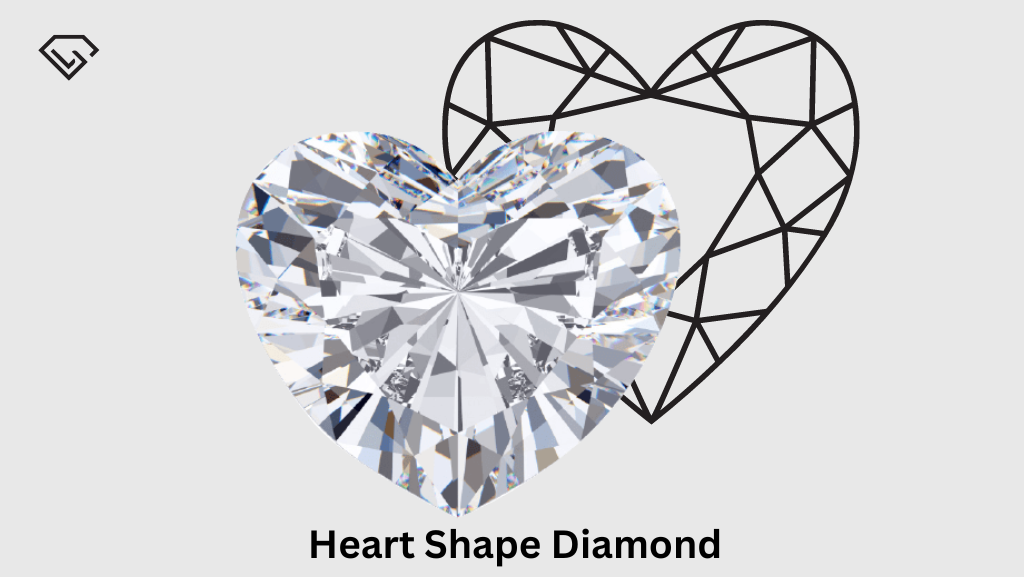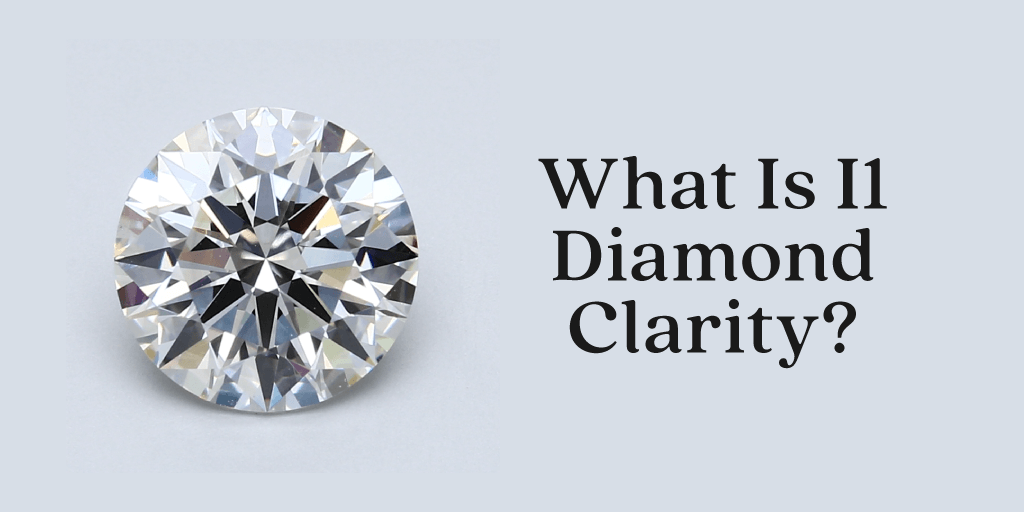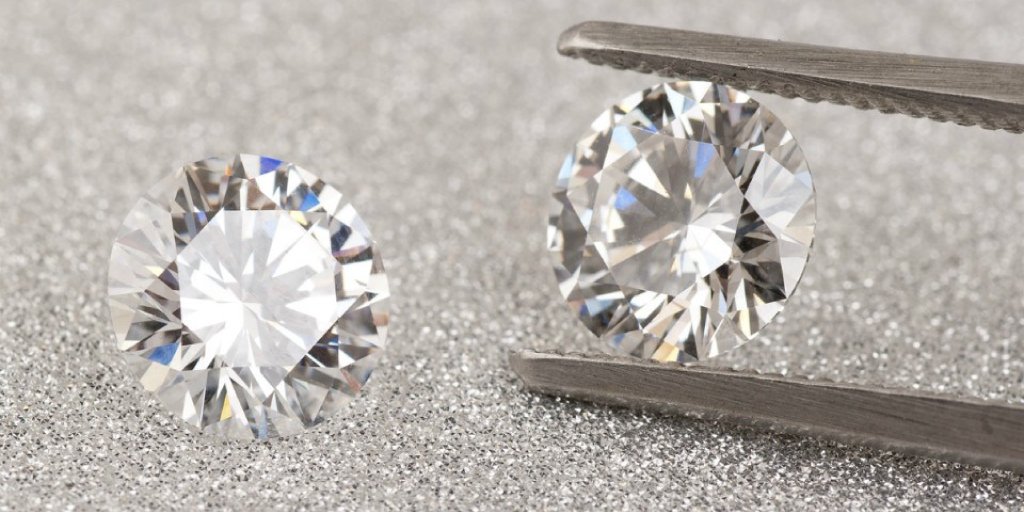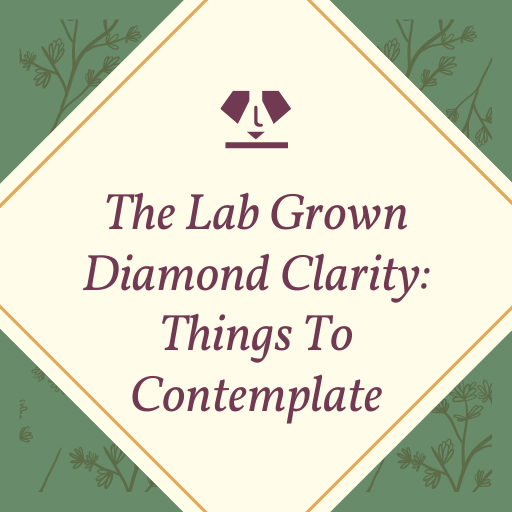CVD Diamonds: All That You Need to Know
CVD diamonds, This come may be met with a blank if you mention it to someone outside the diamond industry. There are not a lot of people who know what the acronym stands for or what exactly these diamonds look like. This is unfortunate because, for anyone who wants a diamond without the ethical and environmental issues that come with mined diamonds, these stones are perfect. Not to mention the fact that they caused a fraction of what natural diamonds do.
To help you understand the manufacturing process, properties, cost, and a lot more about these diamonds, we have curated this handy guide. Before buying a CVD diamond ring or an engagement ring, it might be worth looking into lab grown CVD diamonds.
CVD is an acronym for chemical vapor deposition. Essentially, it refers to the process in which certain materials are deposited when a gas acts upon a substrate. The process involves some chemical reactions that lead to the deposition of the material.
What is CVD Diamond?
Diamonds can be classified into two types depending on the formation process. They formed under the earth’s surface and took billions of years of heat and pressure to form, they are known as natural mined diamonds.
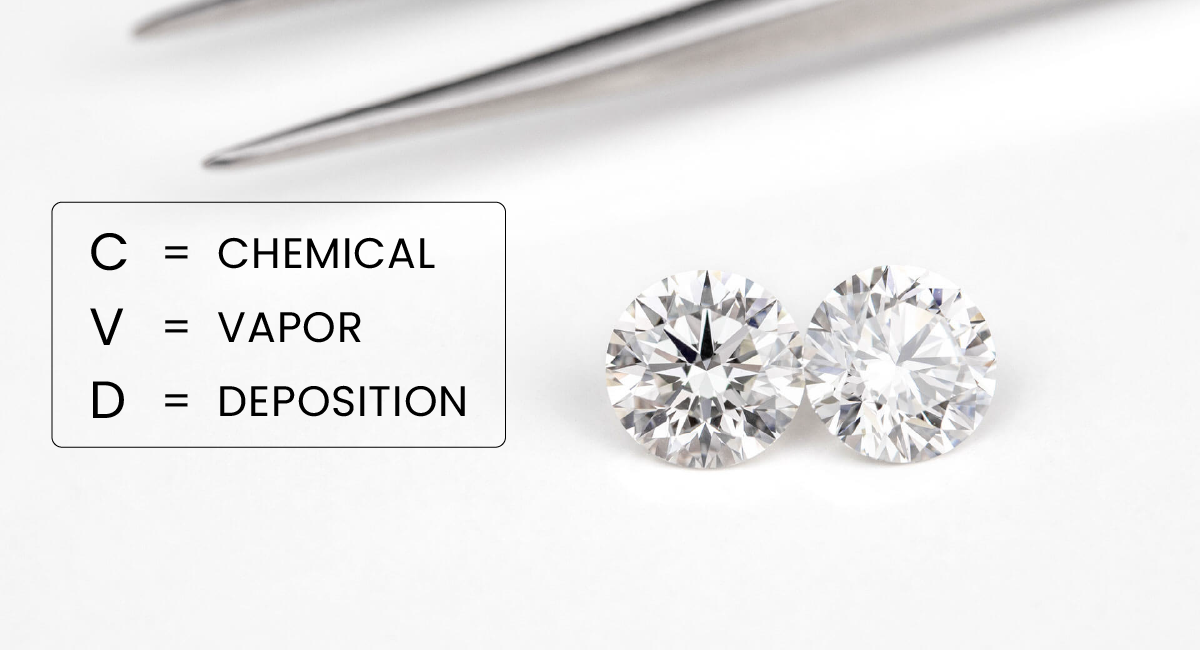
On the other hand, man-made diamonds are formed on the surface of the earth, and as the name indicates, synthetically. One type of man-made or lab-grown diamond is the diamond’s CVD, which is made in labs by using a special process called chemical vapor deposition.
Characteristics of a CVD Diamond
CVD diamonds mirror the precise attributes of natural diamonds, sharing identical internal structure, chemical composition, and captivating luster. Just like their natural counterparts, CVD diamonds boast remarkable durability, scoring a perfect 10 on the Mohs scale of hardness, and exhibit stunning brilliance and sparkle.
Although distinguishing a lab-created CVD diamond from a natural diamond of similar quality is nearly impossible, it’s crucial to be aware that CVD diamonds may sometimes exhibit less desirable traits such as brown tints and internal graining, necessitating post-growth treatment. In comparison, HPHT lab-created diamonds tend to be of higher quality than CVD diamonds.
| Shape | Carat | Cut | Color | Clarity | Price | |
| 1.86 | Ideal | D | VS1 | $1047 $748 | View | |
| 2.50 | Ideal | D | IF | $5225 $4976 | View | |
| 1.91 | Excellent | F | VVS1 | $946 $901 | View | |
| 2.70 | Ideal | D | IF | $4837 $4607 | View | |
| 3.04 | Ideal | E | VS1 | $896 $853 | View | |
| 2.93 | Ideal | E | VVS1 | $3613 $3441 | View | |
| 2.36 | Ideal | I | VS1 | $640 $610 | View | |
| 2.51 | Ideal | M | VS2 | $53779 $51218 | View | |
| 1.86 | Excellent | E | VS1 | $771 $593 | View | |
| 2.17 | Ideal | H | SI1 | $794 $611 | View | |
| 1.83 | Ideal | D | VVS2 | $846 $651 | View | |
| 1.99 | Ideal | F | VVS2 | $1184 $846 | View | |
| 1.87 | Ideal | D | VS1 | $1051 $751 | View | |
| 1.88 | Ideal | E | VVS1 | $837 $598 | View | |
| 1.90 | Excellent | E | VS2 | $736 $566 | View | |
| 2.01 | Ideal | D | VVS2 | $1163 $831 | View | |
| 2.10 | Ideal | D | VVS2 | $1212 $866 | View | |
| 2.29 | Ideal | G | VS2 | $810 $623 | View | |
| 2.71 | Ideal | F | VS1 | $1152 $886 | View | |
| 2.88 | Ideal | F | VS2 | $1082 $832 | View |
Similar to natural diamonds, CVD diamonds undergo grading based on cut, color, clarity, and carat weight. Despite being engineered by humans, CVD diamonds share vulnerabilities with natural diamonds, potentially acquiring color tints and internal flaws during growth. Finding flawlessly clear CVD diamonds is exceptionally rare – some may be heavily included and poorly colored, while others may be nearly colorless with only minuscule imperfections, much like their natural counterparts. Opt for diamonds graded between SI1 and VS1 for clarity, and D to F for color, ensuring top-notch quality and value for your investment.
Remarkably, even seasoned gemologists struggle to differentiate between CVD diamonds and natural diamonds because CVD diamonds possess identical chemical, physical, and optical properties, including the same flaws. When purchasing a CVD diamond, its origin is specified on the GIA, GCAL, or IGI certification. Beyond this certification, specialized laboratory equipment is necessary to distinguish a CVD diamond as a product of human creation.
Chemical Vapour Deposition (CVD) Diamond Making Process:
- Diamond Seed Selection:
- Choose a thin diamond seed, typically a 300-micron thick, 10x10mm slice known as a ‘diamond seed.’
- Thoroughly clean the diamond seed to prevent crystallization of trace elements or imperfections during growth.
- Sealed Chamber Setup:
- Place the cleaned diamond seed into a sealed chamber.
- Heat the chamber to approximately 800°C.
- Carbon-Rich Gas Influx:
- Flood the sealed chamber with carbon-rich gas.
- Ensure a completely sealed chamber to prevent the entry of other gases, disrupting diamond growth.
- Ionization and Attachment:
- Under intense heat, the carbon-rich gas ionizes, breaking down into pure carbon molecules.
- These pure carbon molecules attach to the original diamond seed.
- Crystallization Process:
- Repeat the process, allowing the carbon molecules to bond and build upon the existing diamond seed.
- Continue until a fully formed, rough diamond is created.
- Efficient Growth:
- CVD diamond creation employs a highly specialized scientific process perfected over decades.
- Adapts the chemical vapor deposition process, commonly used in the semiconductor industry, to efficiently produce jewelry-quality diamonds in two to four weeks.
- Potential Traits and Post-Growth Treatment:
- Rapid CVD diamond growth may lead to less desirable traits such as graining, spotty inclusions, and brown tints.
- Post-growth High-Pressure High-Temperature (HPHT) treatment can remove or improve these traits, enhancing the diamond’s overall appearance but may cause milkiness.
- Ideal to seek a CVD diamond without post-growth treatment, as indicated on the diamond’s certificate.
CVD vs HPHT Diamonds
When it comes to creating diamonds, there are two main methods: HPHT (High-Pressure High Temperature) and CVD (Chemical Vapour Deposition).
HPHT diamonds mimic the natural diamond formation process that takes millions of years in the earth’s depths, using high pressure and temperature. This method, unlike CVD, doesn’t involve gas. While both HPHT and CVD diamonds take only a few weeks to form, HPHT requires more energy. Generally, experts note that HPHT diamonds tend to have higher quality and less often need additional treatments after growth.
The key dissimilarity between rough CVD and HPHT diamonds lies in their shapes. CVD diamonds grow in a cubic shape, whereas HPHT diamonds take on a cuboctahedral form. Although distinguishing between the two requires a trained eye, this difference in structure is noteworthy.
Some laboratories adopt a combined approach, starting with the less energy-intensive CVD process and finishing with HPHT. This hybrid method is chosen because HPHT can enhance clarity and color. Importantly, chemically, physically, and optically, both CVD and HPHT diamonds are identical to natural diamonds.
Are CVD Diamonds Affordable?
In the realm of diamonds, affordability is a relative concept. Generally, lab grown CVD diamonds come with a lower price tag compared to mined diamonds—around 20–30% less.
For the amount you’d invest in a 1.5-carat mined diamond, you could opt for an upgraded 2-carat CVD diamond instead. This cost difference can be attributed to three main factors:
- The substantial expense is tied to excavating deep holes in the Earth.
- The extensive supply chain involved in dealing with mined diamonds.
- The historical manipulation of pricing within the industry.
The journey of natural diamonds involves intricate processes: locating and extracting them from the ground or seabed floor, shipping them to cutters, wholesalers, and jewelry fabricators, and distributing them through various channels, including independent retailers and large diamond chains with hefty rents and advertising budgets.
In contrast, CVD diamonds sidestep much of this complexity, resulting in a more budget-friendly price. Despite their lower cost, it’s crucial to recognize that CVD diamonds still hold significant value—they are, after all, diamonds in every sense of the word.
If you’re curious about specific pricing comparisons for CVD and other lab-grown diamonds, you can explore how Clean Origin stacks up against other brands below for a clearer understanding of what to expect in terms of cost.
Frequently Asked Questions (FAQs)
Why is it Difficult to Synthesize Diamonds in the Lab?
Diamonds are made up of carbon, just like coal and graphite. The only difference between these materials is the arrangement of the carbon atoms command which is also known as the crystal lattice. It is difficult to synthesize CVD diamonds because graphite is one of the most stable forms of all types of carbon. That is why diamonds also occur very rarely in nature.
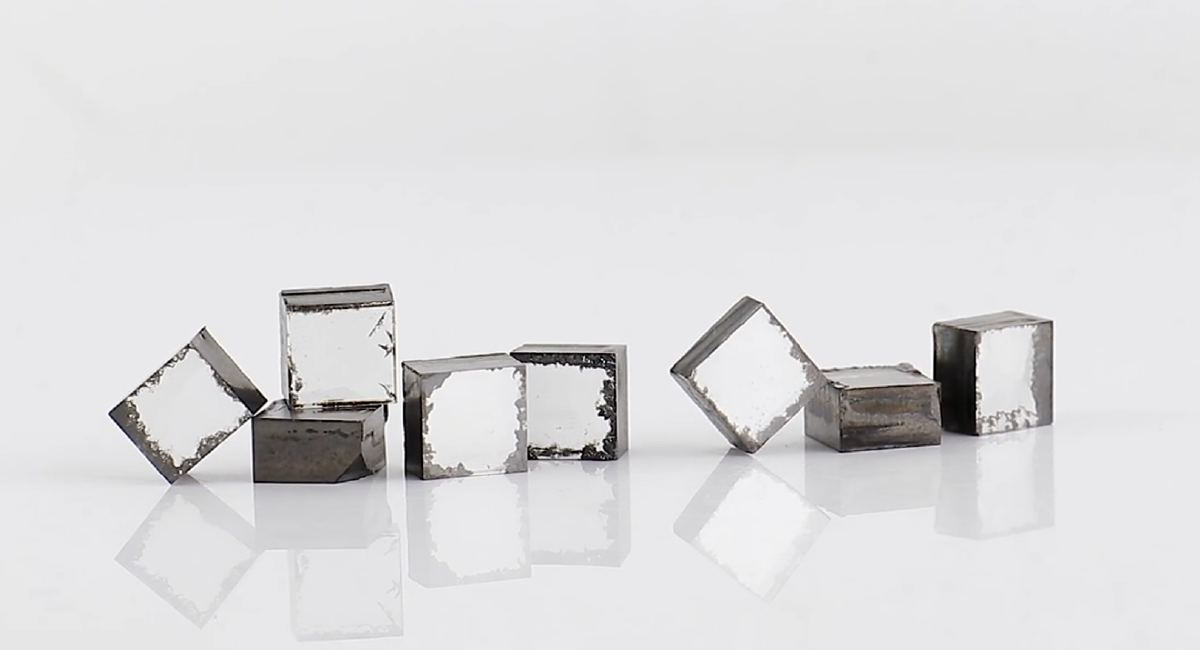
Earlier, in the 1950s, graphite was converted into diamonds using the high pressure and high temperature technique, also known as HPHT. This was a very difficult way to synthesize diamonds in the lab as the stability of graphite would prevent the formation of diamonds using this technique. However, with the introduction of the CVD technique, it was possible to deposit carbon atoms on a surface using a gas that contained carbon.
If proper techniques are used, it is possible to enhance the growth of diamond crystals and suppress the growth of graphite crystals.
How are CVD Diamonds Made?
This technique involves using atomic hydrogen on graphite to turn it into diamonds.
Hydrogen is usually found in nature as hydrogen molecules, which are formed by combining two atoms of hydrogen together. To make CVD diamonds, we first need to break the molecular hydrogen into atomic hydrogen. This is done by using a gas activating agent, which could be an intense plasma or a hot filament.
After hydrogen gas is dissociated into its atoms, the next step is to slowly apply it to the substrate, that is graphite. Hydrogen selectively etches the surface of graphite and breaks up the double bonds. This converts the graphite bonds into diamond bonds.
This is done by first placing a thin seed diamond in a sealed chamber and subjecting the seed to high temperatures, usually around 800 degrees Celsius.
After that, hydrogen, or a mixture of carbon-rich gases which includes hydrogen and methane, is introduced into the chamber. Using the methods stated above, the gases are ionized and their molecular bonds are broken. This results in the attachment of pure carbon to the diamond seed. As more and more carbon atoms are formed, they develop atomic bonds with the same diamond.
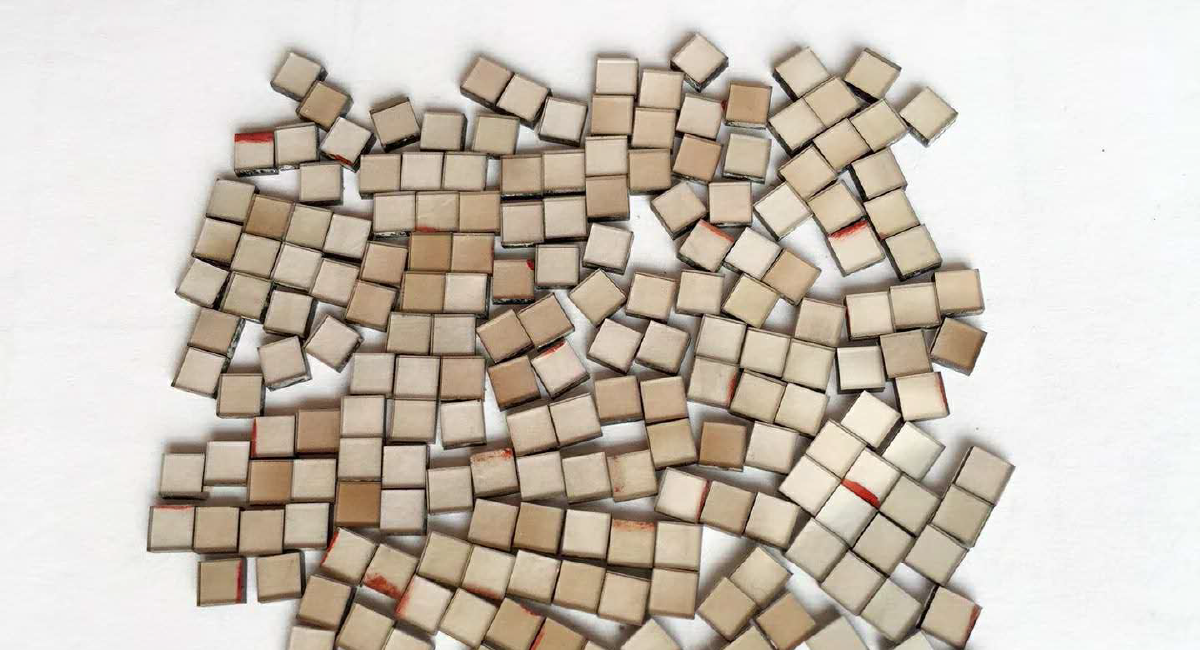
What are the Substrate Materials that can be Used?
Diamond can be deposited on various types of materials. Most of the time the seed used is a piece of the diamond itself, but other materials like tungsten, silicon, molybdenum, silicon nitride, silicon carbide, quartz glass, cemented carbide, etc. Can also be used. The most important feature that the substrate material must have is that it should be able to withstand high temperatures and when it is attacked by the activated gas, it should not dissolve the deposited carbon.
Why are CVD Diamonds Brown?
The brown color of CVD diamonds can be attributed to carbon inclusions within the stone that may be non-diamond in nature. These inclusions may be formed during the process of treating the substrate with carbon gases.
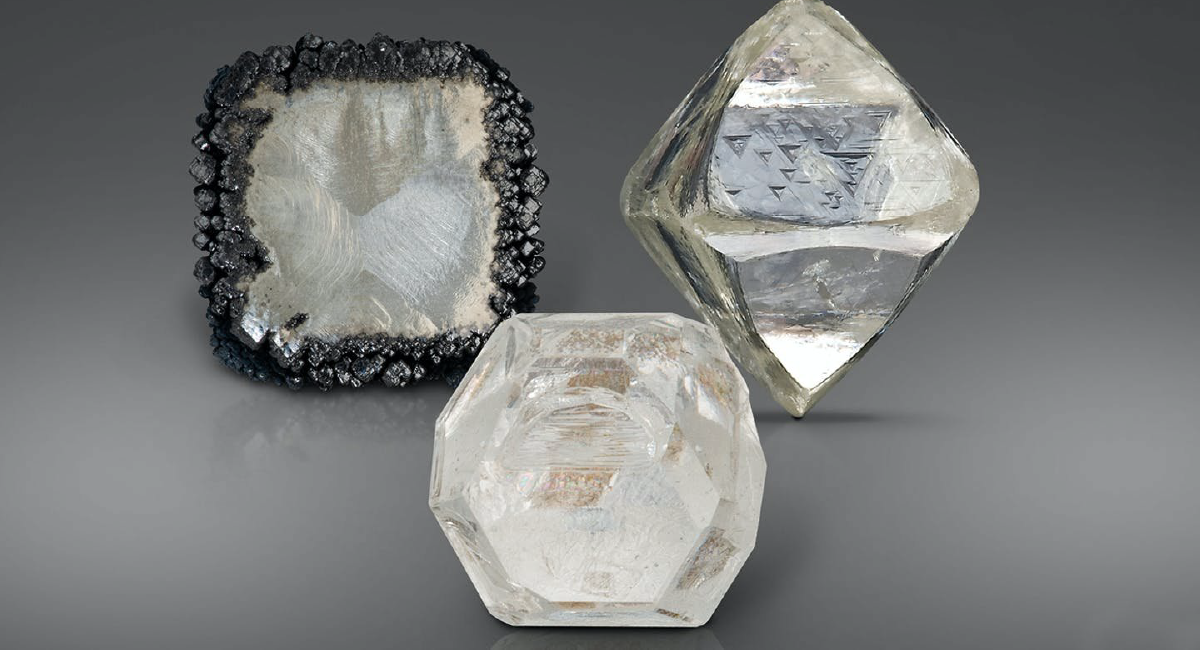
Moreover, it is also believed that the brown coloration can also be a result of internal defects such as dislocations within the stone. However, unlike natural diamonds, the brown discoloration in CVD diamonds is not due to plastic deformation, as is the case when it comes to natural diamonds.
According to the CVD diamond review by GIA, it is possible that the brown hue in CVD diamonds is seen in the case of mass-produced CVD diamonds which are manipulated by adding nitrogen or oxygen to the gas mixture. However, this defect is easily correctable by using high pressure and high-temperature treatment after the formation of the diamond.
How to Identify CVD Diamonds?
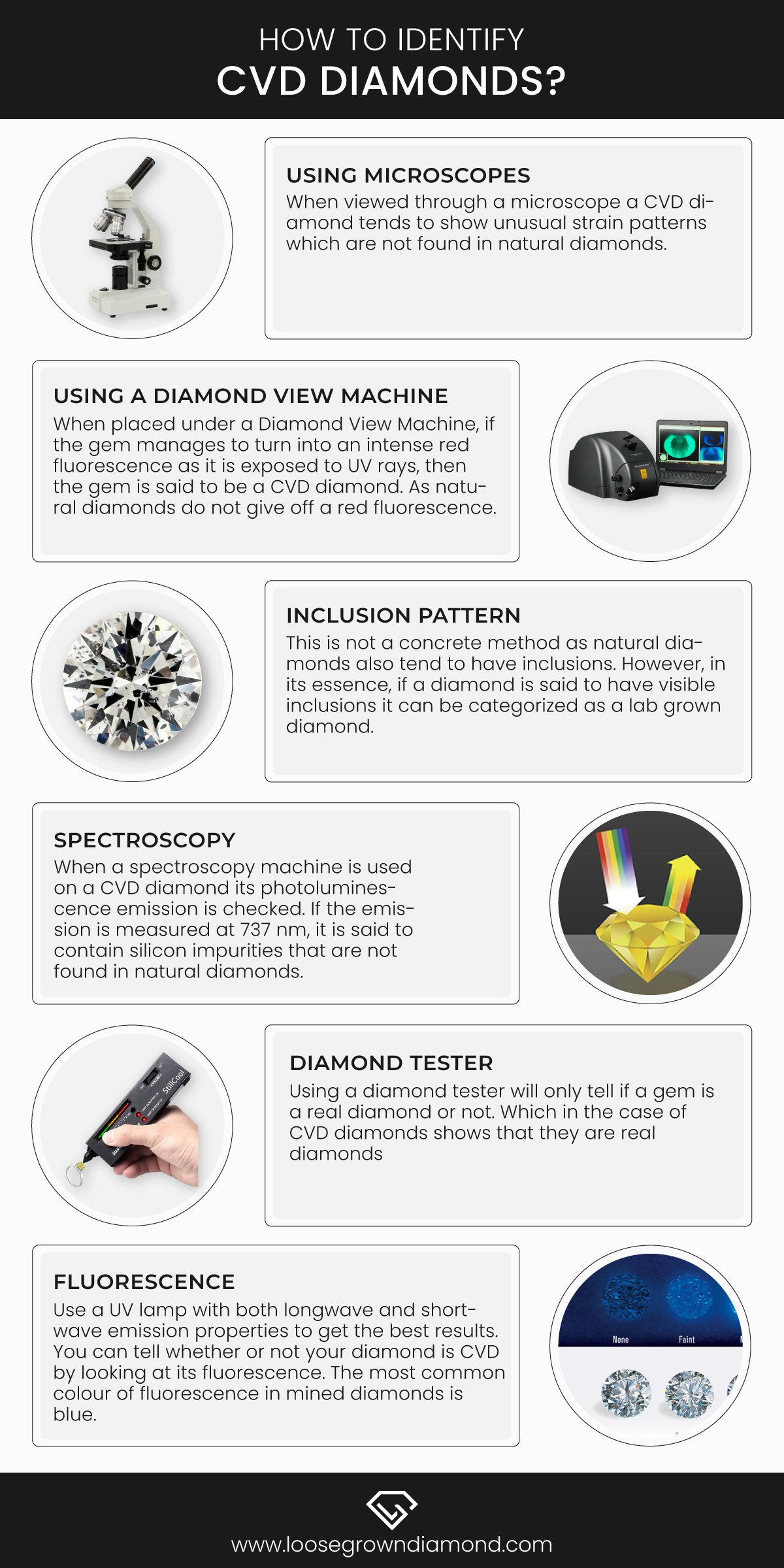
Here are seven ways to identify CVD diamonds:
- Using microscopes – If you place the diamond under the microscope, you will see that CVD diamonds have characteristic strain patterns which are different from the patterns seen in natural or mined diamonds.
- Using a Diamond view machine – This machine uses high-energy UV radiation to identify synthetic diamonds from natural diamonds. When placed under this machine, CVD synthetic diamonds show a strong red fluorescence, which is not visible in naturally formed diamonds.
- Inclusion pattern – Inclusions, especially when seen under a microscope, are present even in natural diamonds. However, the difference is that in CVD diamonds, these inclusions are less dispersed compared to natural diamonds.
- Spectroscopy – This process refers to placing the diamonds under a spectroscope instrument. These instruments usually emit light at 737 nm. When exposed to this light, CVD diamonds show strong photoluminescence emission due to the presence of silicon in them, whereas this is not seen in natural diamonds.
- Diamond tester – This instrument is used to check if the stone in your hand is a diamond or not, but it cannot maybe reveal whether it is a natural diamond or a man-made one. The dual electronic diamond tester uses thermal and electrical conductivity to check whether a stone is a diamond or not.
- Fluorescence – Use an ultraviolet lamp that has both longwave and shortwave emissions. If the diamond shows a fluorescence of blue, it is confirmed that it is not a CVD diamond. Mined diamonds can show fluorescence in many colors, but the most common is blue.
Also, it should be noted that natural colorless diamonds show fluorescence typically under long-wave ultraviolet light, whereas the fluorescence becomes weaker when seen under short-wave ultraviolet light. On the other hand, synthetic diamonds are reversed, they show the strongest reaction under shortwave light.
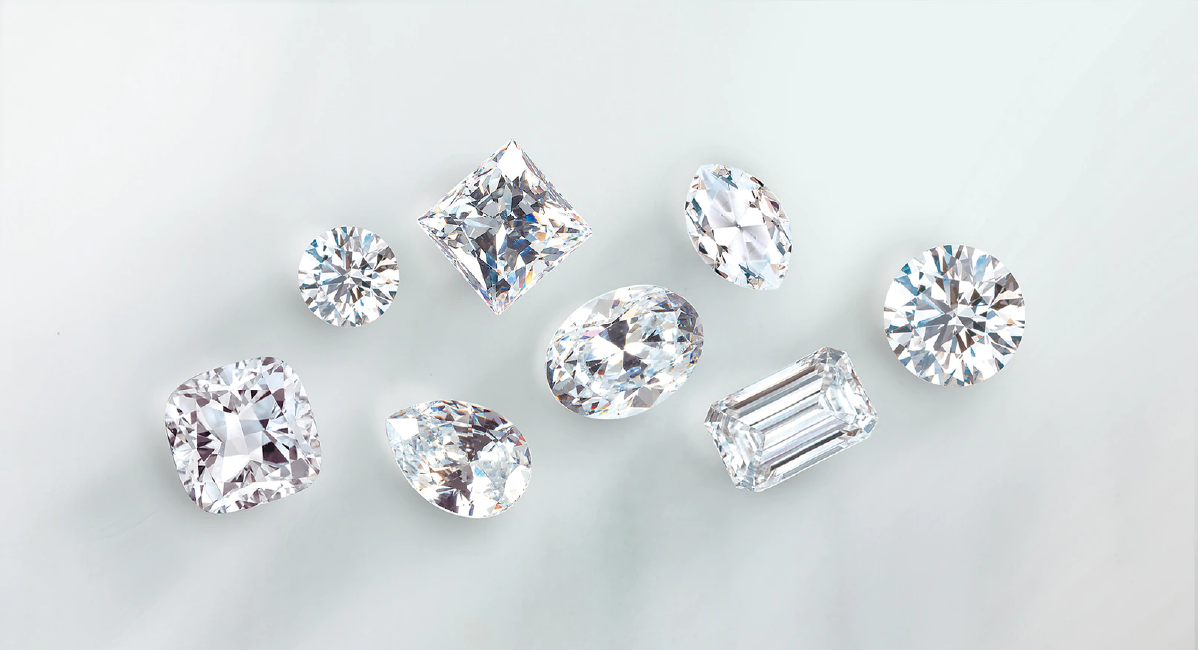
Moreover, CVD diamonds show dark brown, almost red fluorescence under long-wave UV, which becomes moderately strong and turns yellowish-green in color under shortwave light. This is a positive confirmation of the presence of a synthetic diamond.
Do CVD Diamonds test the same as Real Diamonds?
Really diamonds have the same crystal structure as natural diamonds, and the chemical composition of both types of diamonds is the same. When we use the term synthetic diamonds or manufactured diamonds, these terms do not actually refer to the diamonds themselves, but rather the process of manufacturing them. Chemically speaking, the lab diamonds are indistinguishable from real diamonds.
However, there are some chemical properties that may be a little different. For instance, the testing methods mentioned above, like the inclusion pattern, fluorescence, and spectroscopy may show some difference between the two types of diamonds. However, this does not mean that the stones behave differently entreated two chemical, thermal, electrical, or any other kind of treatment.
What to Look for When Buying CVD Diamonds?
When you’re buying, or for that matter any type of lab ground diamond, it is necessary that you take some precautions to get the best value for your money. There are two things you need to remember before buying a CVD diamond.
The first is to avoid diamonds that have a brown color hue. There are many concede attacks that can cause the appearance of brown color in CVD diamonds. This affects the optical properties of the diamond. Look at the two pictures shown below.
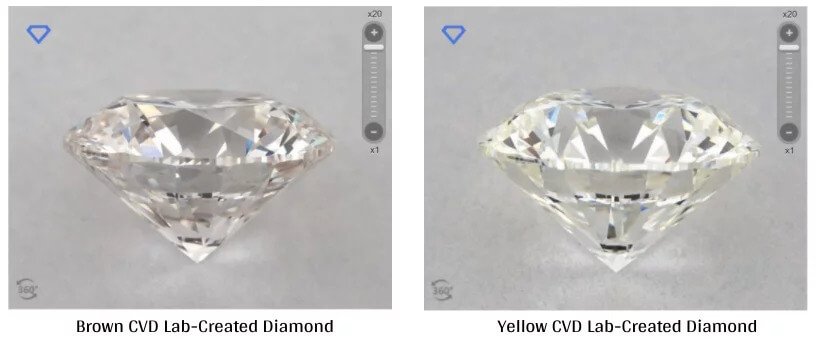
The brown hue of the elaborated diamond is usually apparent when you see the diamond in the profile view. When you compare the two diamonds above, you will be able to see the difference quite clearly. The 2.03 H VS1 CVD diamond looks brown, while the 1.24 H VVS1 diamond appears yellow, just like a natural diamond.
It is recommended to avoid buying diamonds that have this hue or to go up in color to D, E, or F to minimize the appearance of the brown hue.
The second thing you need to consider is strain-induced birefringence, which gives the lab-created diamond a fuzzy appearance. This happens when there is a mismatch between the crystal lattices when the diamonds are grown layer by layer.
The result is that the diamond looks fuzzy and has strain lines.
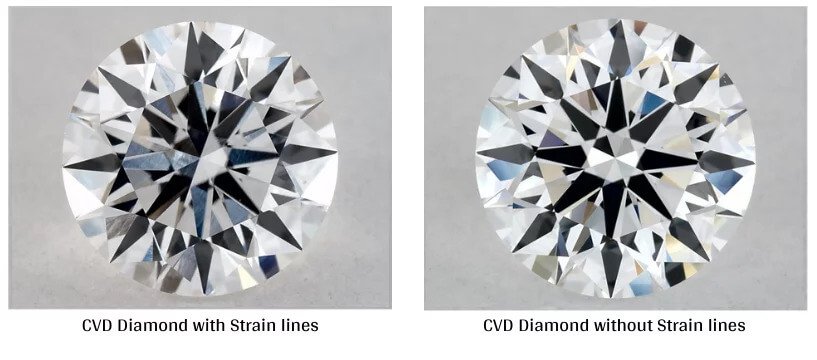
It is recommended to avoid this type of diamond entirely. It should also be noted that train lines are not evaluated when grading the diamond for clarity, which is why sometimes they can still receive a vs1 grading even if the diamond is fuzzy.
What is the Cost of CVD Diamonds?
It is impossible to make a sweeping statement about whether or not CVD diamonds are costly or not, but it is true that they generally cost less than natural diamonds, usually, 20 to 30% less.
The amount of money you will pay for a 1.5-carat natural diamond can easily fetch you a 2 carat CVD diamond. This is because of several reasons. Mined diamonds required more physical labor, a long supply chain, and manipulation of pricing to ensure regular supply and demand. However, for CVD diamonds, this is not true. This is not to say that CVD diamonds are somehow cheap or less valuable, it is just that they are less expensive compared to their mined counterparts.
You can get CVD diamonds at the best price on loosegrowndiamond.com where their prices start from $300-$500.
What is the Temperature at Which CVD Diamonds Grow?
The temperatures at which optimum growth is obtained are between 700 to 900 degrees Celsius. It is also possible to grow diamonds at lower temperatures, but in this case, the growth rate will be extremely slow.
Are all Lab Grown Diamonds CVD Diamonds?
No, all lab-grown diamonds are not CVD diamonds. CVD is a relatively recent process and before it was introduced, lab grown diamonds were created using the HPHT approach. However, in the modern world, CVD is a more effective method for growing diamonds in the lab.
Where to Buy CVD Diamonds?
You can buy CVD diamonds at loose grown diamond worldwide shipping and a guarantee for all of their products. Moreover, we are a CVD diamond manufacturer and sell diamonds at wholesale prices so you are guaranteed to save a lot of money as well.
Whether you should choose a natural diamond or a CVD diamond is a question you should ask yourself before buying any kind of diamond jewelry. After all, of course, way less and does not have any of the complications that natural diamonds do.
What are the Benefits of Buying CVD Diamonds?
Here are some benefits of buying a CVD diamond over a natural diamond:

Mining Free
“NO MINING” is required for Lab-created diamonds.
Elevate your jewelry with mining-free Lab Grown Diamonds
Quality
Lab-created diamonds have the same quality
and optical properties as natural diamonds.
Valuation
Lab-created diamonds contribute excellent value
and are more affordable than natural diamonds
- The cost of manufacturing a CVD diamond is less than that of mining and transporting a natural diamond.
- There is no environmental damage when it comes to manufacturing CVD diamonds, whereas mining natural diamonds causes a lasting negative effect on the earth. Moreover, lab-created diamonds do not create any mineral waste either.
- There is no ethical issue when it comes to lab-created diamonds. On the other hand, natural diamonds are often called conflict diamonds or blood diamonds because they are known to be used for illegally funding conflict in war-torn countries. Moreover, diamond miners and diamond polishers work in terrible working conditions and are often prone to injuries and human rights violations.

